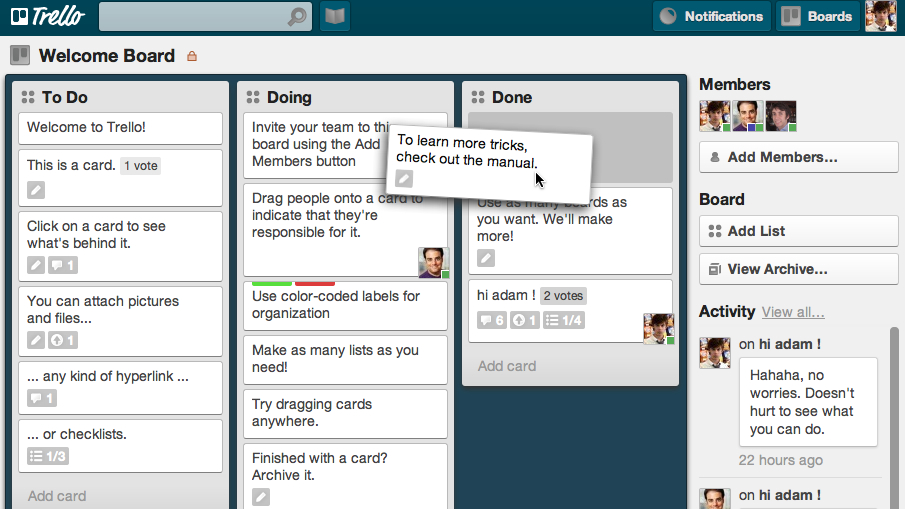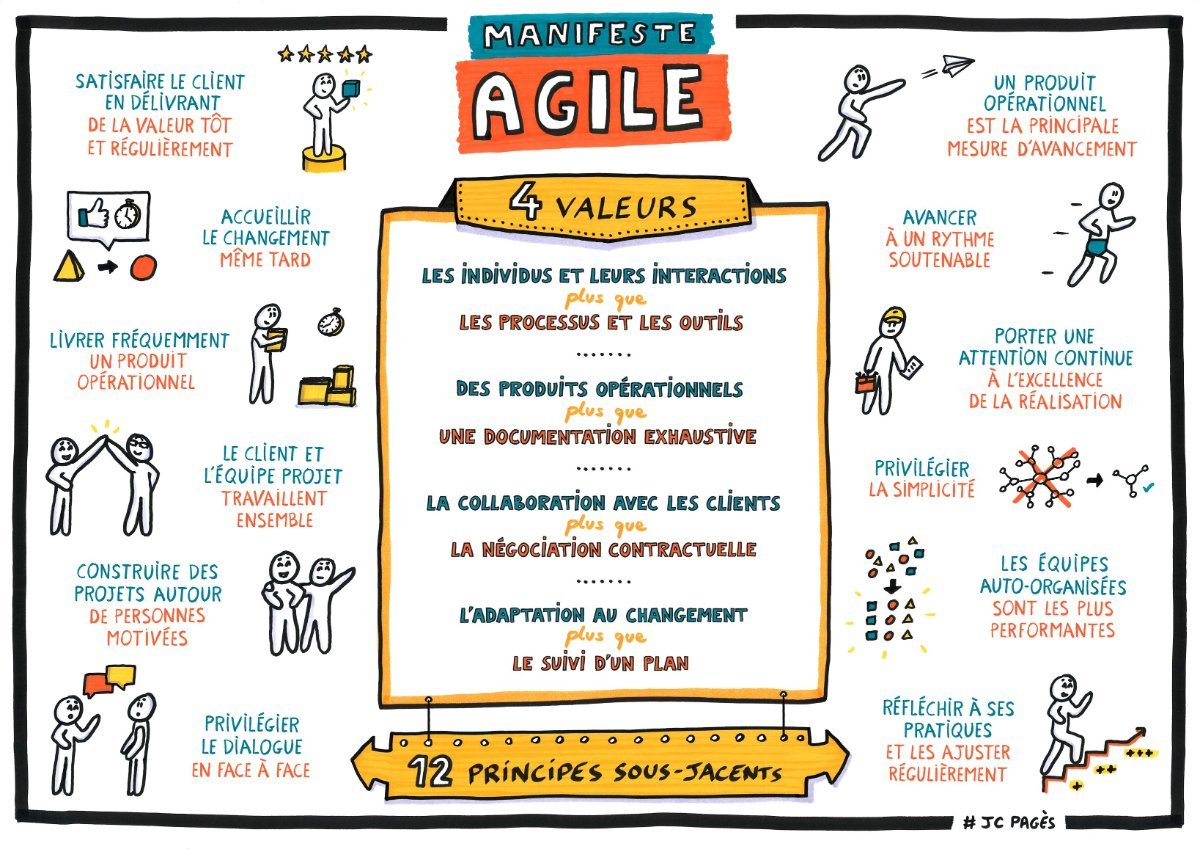Trello distinguishes itself as an essential tool for optimizing agile management. With its intuitive structure, it allows easy visualization of projects through boards, lists, and cards, thus promoting smooth collaboration among team members. Users benefit from a global overview of task progress, while also having the ability to prioritize and adjust their workload dynamically. By adopting Trello, teams engage in a modern and effective approach to collaborative work, adapted to the changing requirements of the current professional context.
Trello is a collaborative project management tool that facilitates an agile approach, enabling better organization and increased visibility. Through its intuitive visual interface, Trello uses boards, lists, and cards to structure tasks and projects. This method allows for smooth collaboration within teams, making task management and progress tracking more cross-functional. Customization features offer the opportunity to establish workflows tailored to the needs of each project. Additionally, Trello offers free options, making this tool an accessible choice for small teams while enhancing productivity and efficiency in a dynamic environment.

Trello is an online project management tool, known for its simplicity and efficiency. This platform allows users to visualize work through dynamic boards organized around activity cards. Adopting Trello within an agile framework can significantly enhance a team’s efficiency and the transparency of project management. In this definition, we will explore how Trello promotes collaboration, task tracking, and organization within agile teams.
Table of Contents
Toggle1. An intuitive interface for visual management
The main strength of Trello lies in its visualization of projects. Thanks to a system of boards, lists, and cards, each team member can quickly identify the status of tasks. Each board represents a project, while the lists inside these boards group the different stages of the project, such as “To do,” “In progress,” and “Done.” The cards, in turn, detail the specific tasks to be accomplished.
This visual approach promotes better understanding of project progress and individual responsibilities. Teams can quickly adjust their priorities based on task evolution, which is essential in an agile environment where changes are frequent.
2. Flexibility and customization to meet specific needs
Trello also offers great flexibility in organizing projects. Users can customize their boards according to their specific processes. Whether you want to add color labels to categorize priorities, due dates to keep track of deadlines, or checklists to detail sub-tasks, Trello can meet the needs of every team.
This customization also allows for the integration of existing processes. For example, teams already using methodologies like Scrum can easily adapt Trello to track sprints and iterations. By adopting an agile method like Scrum, teams can benefit from task synchronization and continuous updates on progress while remaining aligned on common goals.
3. Simplified collaboration and smooth communication
The integration of Trello facilitates collaboration among team members. With the comment feature on each card, users can exchange ideas, ask questions, or provide feedback directly on the relevant task. This centralizes all discussions and eliminates the need for multiple email exchanges, which can burden communications.
Trello also allows for the assignment of members to cards, clarifying who is responsible for each task. Real-time notifications keep members informed of updates and changes made to the cards. Thus, everyone stays aware of project developments without extra effort. To further enhance collaboration, Trello can be integrated with other communication tools like Slack, pushing the effectiveness of interactions within the team even further.
Moreover, the ability to share boards with external stakeholders (clients, collaborators from other teams) promotes transparency and alignment on expectations. People outside the project can check task progress without requiring frequent interactions, thus optimizing exchanges.
4. Process automation with integrations
Another major advantage of Trello is its ability to integrate third-party applications, allowing for the automation of many tasks. Thus, you can easily connect Trello to tools like Zapier to create automations that fit your workflows. For example, you could automate adding cards when new clients sign up for your service, or move cards to “Done” automatically when a task is marked as completed in another management tool.
This automation reduces the time spent on repetitive tasks and allows the team to focus on what really matters: creating value. Trello also offers preconfigured board templates for various sectors and needs, facilitating the quick implementation of an effective project management system.
In conclusion, Trello stands out as a powerful tool in transforming agile project management methods. Its ability to provide a clear visualization, flexibility to adapt to the specific needs of each team, and integrated collaboration features make it an essential choice for improving all dimensions of agile project management.











